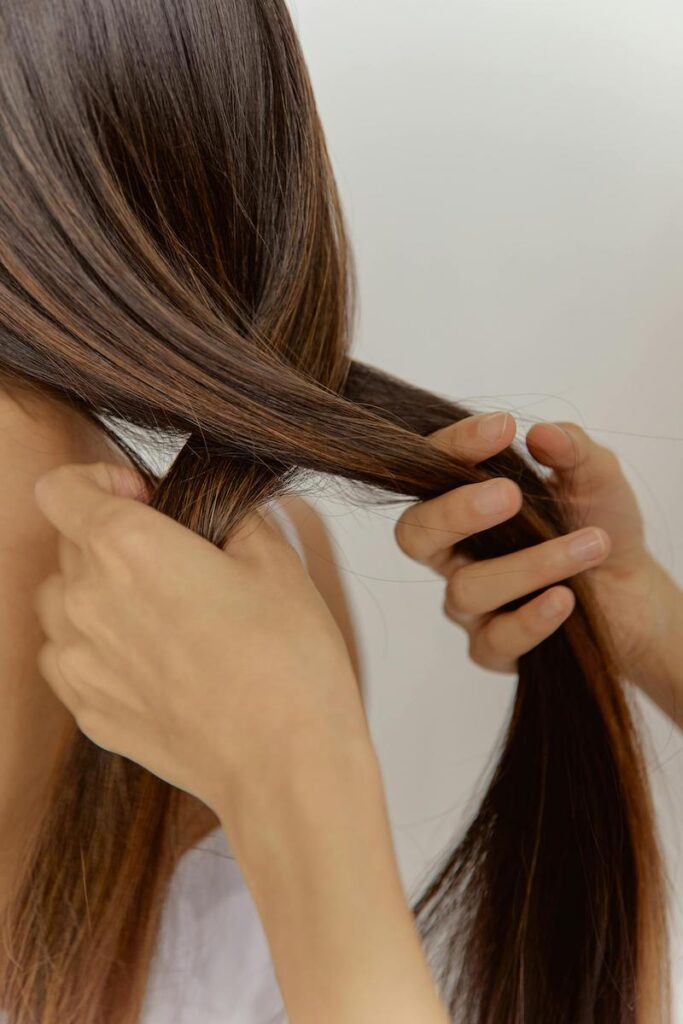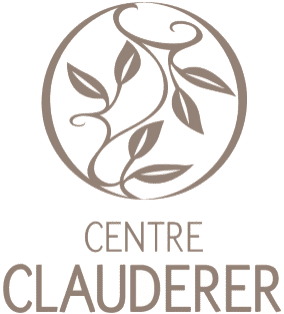Keratin and hair care have a long history together, and with good reason. Keratin is the very building block of hair, so adding keratin to a hair care product is an obvious way to breathe new life into tired hair.
To fully understand how keratin can benefit hair, here are a few points to consider:
- What is hair keratin: structure and role?
- What happens when keratin is damaged?
- Which keratin skincare products are effective
What is keratin?
Keratin is a long, fibrous protein in the shape of a helix, rich in 18 amino acids (of which methionine and cysteine, 2 sulphur-containing amino acids with strong protective properties). Hair is made up of 95 % of keratin. The keratin in hair is formed by numerous chemical bonds or " cross-links " :
- disulphide bridges, which ensure the hair's strength and elasticity,
- salt bonds that preserve the hair's shape memory
- the hydrogen bonds responsible for the hair's suppleness.
When we hear the word "keratin", we immediately think of hair and nails (phanera), but in reality there are more than 50 types of keratin in our bodies. There is type 1 keratin, whose main role is to protect the body from external elements. Type 2 keratin, on the other hand, mainly protects our internal organs such as the lungs and liver.
These two types of keratin can also be grouped together under the term alpha-keratin, a specific keratin cell structure found only in humans and certain mammals: sheep's wool being the best-known example.

A keratin in common!
For the record, there's also beta-keratin: these are the proteins that form the feathers, claws, beaks and... skin of snakes!
How does keratin work?
Hair is made up of a stack of small keratin "bricks" generated in the hair follicle from keratinocytes or keratin-producing cells. It is during the anagen phase (hair growth time) that keratin is pushed out of the hair follicle to form a keratin "tower". Gradually, these cells are superimposed to form the hair shaft, itself made up of several layers: cortex, medulla and cuticle. This period of several years is the hair's active phase. Then comes the catagen phase: the hair stops growing. After a few weeks, this is the resting or telogen phase: the hair detaches from the hair follicle, it is dead and falls out.
What is keratin used for? In the hair shaft, keratin is first and foremost the element that forms the scales of the cuticle: flexible and resistant, they fit tightly together to form the top layer that protects the hair, making it strong, smooth and shiny. Keratin is then the hair's secondary layer: the cortex, made up of fibres that give the hair all its elasticity.
It's easy to see how important it is to take care of your hair follicles, as they are the matrix of your hair. You can't have strong hair without a well-nourished follicle! Especially as, once produced, keratin does not renew itself. So we need to take care of it from the outset, but also protect it throughout the hair's life, as it is subject to the vagaries of time, external aggression (pollution but also cosmetic manipulations) that attack and destroy this fragile balance.
What are the risks to hair when keratin is damaged?
Damaged keratin, damaged hair!
Hair is in constant contact with the outside world and, as such, is susceptible to repeated damage: chemical dyes, cosmetic manipulations that destroy disulphide bridges to make hair artificially smooth (the more disulphide bridges there are, the curlier the hair, but also the more fragile it is because each of these points of cellular rupture corresponds to a hair curl), styling tools that are too hot and cause burns, insufficient or excessive hair care (cf. hygral fatigue).
Internally too, hair is liable to suffering: iron-deficiency anaemia, various nutritional deficiencies and the hair follicle is malnourished, unable to give rise to good quality keratin (protein).
Result: instead of forming an impermeable protective barrier, the cuticle is fragile, irregular and made up of disjointed scales: the hair becomes porous (the active ingredients in the hair care products 'pass through' and are no longer retained in the hair fibre), it becomes dry, dehydrated and breaks. If the scales are no longer closed, goodbye healthy, smooth and silky hair: it becomes dull, rough and lifeless. Worse still, if the damage goes deeper, it's the cortex that is attacked: the fibres are broken, the hair fibre is shattered, and it's irreparable.
Taking care of your keratin for beautiful hair
We can act from the inside as well as the outside.
From the inside: a diet rich in protein and amino acids, supplemented by a course of dietary supplements where necessary.
On the outside: keratin treatments are very popular, and it's tempting to use them to treat and repair all the ailments affecting our hair. Here's what keratin treatments can do for your hair:
REINFORCE
For both prevention and repair, complete care products incorporating plant keratin such as wheat or sweet almond proteins help to strengthen the hair's structure. Clauderer Crèmes 25 and 26R are ideal repair products for dehydrated hair, with a light texture that doesn't weigh the hair down. You can even use them as an ultra-gentle, ultra-repairing cleanser to nourish fine and curly hair, including frizzy hair. A little extra tip: massage in to stimulate micro-circulation, apply your Crème and leave on for at least 20 minutes. Rinse and admire!

Strong hair thanks to keratin-enriched treatments
SMOOTH
Hair is dull, rough to the touch and no hair care product seems to be working? The cuticle, the hair's protective envelope which - when it's in full health - is made up of keratin scales precisely interlocked to form an effective barrier against external aggression and provide the eye with a smooth, shiny, wavy mass, is probably damaged. When the hair scales are no longer fused together, the hair becomes porous, the hair's natural moisture disappears (evaporates), and the treatments no longer work deep down because their active ingredients are no longer stored at the heart of the fibre. Deep repairing treatments with or without rinsing (coconut or argan oil) are then essential to close the hair scales and restore the hair's shiny, soft, healthy appearance. If the symptoms persist, it may be too late, in which case there's only one remedy: cut off the split ends and take care of the new growth.

Closed scales = smooth, shiny hair, thanks to keratin!
REPAIR
Once the disulphide bridges have been destroyed - by chemical straightening for example - it is impossible to rebuild these fragile, complex bonds. A repairing hair care product will help to nourish and moisturise the fibre, adding density to the hair. Once hydrated, curls are plumped up and regain their elasticity and tone.

Care for your curls with the right hair care products
Keratin hair care repairs, strengthens and protects, and that's already a lot. The role of keratin, in its natural state or as a complementary treatment, is to strengthen the hair thanks to its specific composition, which is rich in sulphur amino acids in particular. These precious proteins can be supplied to the hair by targeted external treatments and foods that encourage keratin production: eggs and salmon, but also sweet potatoes, onions and garlic, mushrooms or kale.
One last piece of advice: there's no point in saturating your hair with multiple keratin treatments, as the hair won't tolerate it and will quickly let you know by becoming difficult to style, full of frizz, rough, dull and brittle. Taking good care of your hair requires moderation and common sense, that's all!

